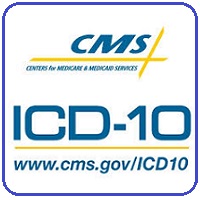 By Kimberly Zapf, RHIA, CCS, AHIMA-approved ICD-10-CM/PCS Trainer, Manager of Education, himagine solutions
By Kimberly Zapf, RHIA, CCS, AHIMA-approved ICD-10-CM/PCS Trainer, Manager of Education, himagine solutions
Twitter: @himagineInc
It’s that time of year again! Time for the ICD-10 CM code updates. The new codes will go into effect with 10/1/17 discharges. There are over 800 changes this year in ICD-10 CM alone! 350+ new codes have been added, 225+ codes revised and 142 codes deleted along with some updates to the Official Coding Guidelines. Quite a few new sub terms were added and changes to Excludes 1 and Excludes 2 notes made so you will want to read these when selecting your code.
Let’s start off with the new codes added in Chapter 2, Neoplasms.
- C96.20: Malignant mast cell neoplasm, unspecified
- C96.21: Aggressive systemic mastocytosis
- C96.22: Mast cell sarcoma
- C96.29: Other malignant mast cell neoplasm
It’s also important to note the new Diabetes codes from Chapter 4.
- E11.1: Type 2 diabetes mellitus with ketoacidosis
- E11.10: Type 2 diabetes mellitus with ketoacidosis without coma
- E11.11: Type 2 diabetes mellitus with ketoacidosis with coma
Another important update to this chapter was that the index was updated to include “with osteomyelitis” under Type 1 and Type 2 Diabetes Mellitus. This was omitted last year.
The substance abuse codes from Chapter 5 have expanded to include codes for early or sustained remission. The dependence codes in this chapter have expanded definitions which include early or sustained remission. Nicotine dependence can be classified as mild, moderate or severe when in remission.
Chapter 7, Diseases of the Eye and Adnexa, had a big expansion on category H54.- codes for blindness and low vision to include category levels for each eye. These codes are going to require very specific documentation from physicians.
Big changes were made to Chapter 9 and the myocardial infarction (MI) terminology. The codes are now classified by the type of MI the patient is having.
- I21.0-I21.4: designated as type 1 myocardial infarction
- I21.9: myocardial infarction (acute) NOS
- I21.A1: myocardial infarction type 2
- I21.A9: other myocardial infarction type – which means types 3, 4a, 4b, 4c and 5
Coders are going to have to know the definitions of the different types of MIs and work with their physicians and clinical documentation improvement (CDI) specialists to improve documentation where needed.
Another big expansion area are the Congestive Heart Failure codes. A new code category was added I50.8 Other heart failure with code expansions to include codes for acute and chronic right heart failure, biventricular heart failure, high output heart failure, end stage heart failure and other heart failure. There are notes under each of these new codes that provide examples of what is included or what should be coded along with it. Be sure to read these when selecting this code.
There are 73 new codes for non-pressure chronic ulcers as well as new coding guidelines applicable to these. If this is an area that you code, you will want to read up on these and be aware of the available codes.
A new code has been added this year for Acute respiratory distress. This is a good one to be aware of as it seems this is documented quite frequently.
There are numerous other changes with the ICD-10 CM codes. It is worth your time to review the changes, attend webinars and pay attention to the new notes in your code book.
This article was originally published on himagine and is republished here with permission.
